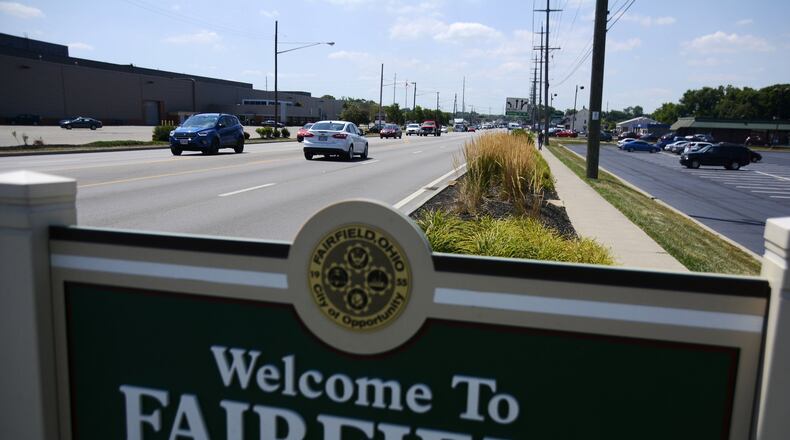Two census tracts were included in the study as they abut the Ohio 4 corridor that has struggled in some parts and is peppered with blight. There are opportunities for business redevelopment, and though residential areas are “built out” in the abutting census tracts, it’s not sufficient, according to the study. More than a quarter of the city’s residential inventory are in these two tracts.
Doug Harnish, principal of Market Metrics, said the city can go in one of two directions improving the corridor’s marketability: embrace the oversaturation of retail and service industry — namely automotive and food service businesses — or work to diversify the types of businesses along the roadway.
Of the 361 retail establishments in the city, 151 are along the corridor north of Nilles Road, as is 256 of the city’s 765 service-based establishments.
RELATED: The GM plant’s closure three decades ago put Fairfield on the brink. Here’s how it clawed back. (April 2019)
Harnish said city may need to intervene in the market based on the direction City Council wants to see the corridor head, which Development Services Director Greg Kathman said that could mean helping people assemble properties and demolish old, obsolete buildings, “or maybe the city may have to look at doing some of that ourselves.
“Then you can kind of reset the market, bring in either users that don’t have a place to go or bring in potential new users — either retail or other types of land use — into the market. They can’t go there now because there’s just older, smaller lots and older, smaller buildings.”
Kathman said since the city doesn’t own property along this stretch at this time, the study can also be used by private property owners as they consider marketing plans.
Harnish said if a business is considering moving to the city, they’re looking at a couple of things first: household growth and income. Both are weaker in this area of the city compared to the citywide averages.
“The combination of the two, household growth and household income, they give (a business) opportunities to capture a market share without having to capture it out of the cash drawer of my nearest competitor,” said Harnish. “The corridor doesn’t really come in at the top of the heap. It’s down at the list” because of weaker household growth projections, and weaker household incomes compared to citywide averages.
LOCAL NEWS: Two Fairfield nonprofits to take plunge with new fundraiser
The study shows higher renter-occupied housing than the citywide average, and incomes range between $8,600 t0 nearly $14,600 lower than the citywide average of $77,505.
The market study will be incorporated in a larger redevelopment strategy Kathman and his Development Services team has worked on in multiple areas of the city. Combined with the study, the Fairfield Forward Comprehensive Plan and internal research on the efforts of other communities, Kathman’s team plans to present a proposed strategy and recommendations to Council later this year.
“It might be short-, medium- and long-term initiatives,” Kathman said. “That’s what we’ve been doing is setting the stage for a comprehensive redevelopment initiative.”
About the Author

